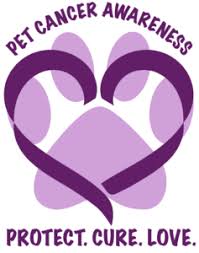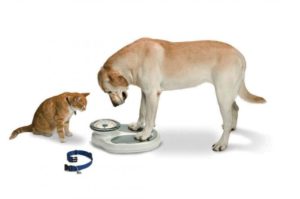
Danger! Foxtails Everywhere!
June 16, 2017
Cancer in Our Pets
November 10, 2017Obesity is a growing epidemic. Not just in humans but in our pets as well. The statistics vary, but some polls show that potentially over 60% of our household pets are overweight. What does this mean? It means that more than half of our pets are carrying excess body weight, so over half of our pets are being overfed and under-exercised.
Why Animal Obesity is a Problem
Why is this a problem? Just like in people, excess body weight for pets can result in the development of several diseases, decreases their life expectancy, and puts them at higher risk during general anesthesia. The more weight a pet carries, the more severe the damage it causes to the body. Osteoarthritis, skin conditions, diabetes, and stress on internal organs are just some of the consequences of carrying extra weight. These are all conditions that can be challenging to treat and manage. The good news is, that with hard work and weight management these conditions in overweight pets can be decreased or reversed once the extra weight is lost.
Is My Pet Overweight?
So, if the majority of pets are overweight how do you know if your pet is one of them? At Muller Veterinary Hospital all of the doctors, veterinary technicians, and assistants are trained to evaluate your pet’s Body Condition Score (BCS). This is an assessment of how underweight or overweight your pet is. It takes into consideration muscling as well as the amount of excess fat a pet may be carrying. The score is scaled from 1 to 9. (1 being severely underweight, 5 being an ideal weight, and 9 being very overweight). A BCS score will be given to your pet at their annual exam.
What to Do if Your Pet is Obese
What do you do with your pet’s BCS score? If your pet is not an ideal score of 5, this is an opportunity to discuss with your veterinarian some changes you can make to help your pet reach its ideal weight. First, it’s good to set a goal for your pet. Does he need to lose 5 pounds or more? Perhaps your pet only needs to lose a few pounds to reach their goal weight. Good information to have for your veterinarian is to know what your pet eats, how much, and how often. It’s not just the brand of kibble to consider. You should be able to let your veterinarian know what kind of treats your pet gets and if they get any people food as well. It’s also important to inform your vet about how much physical activity your pet gets on a regular basis. Together, with all this information, you and your veterinarian can develop a weight loss plan. The plan may include cutting calories, increasing exercise, or maybe even changing your pet’s food. (There are now pet diets that are designed to help pets lose those extra pounds).
All of the pieces of the plan that you and your veterinarian put together will be custom made for you and your pet. Breed, age, and lifestyle are all a part of developing a weight loss plan for your fur baby. In order for you to get a visual understanding of a BCS, schedule an appointment with your veterinarian. The doctor can show you what physical traits are evaluated and provide other visual aids to clarify where on the scale your pet falls. Let our doctors and staff help your pet with their weight management and weight loss goals.

